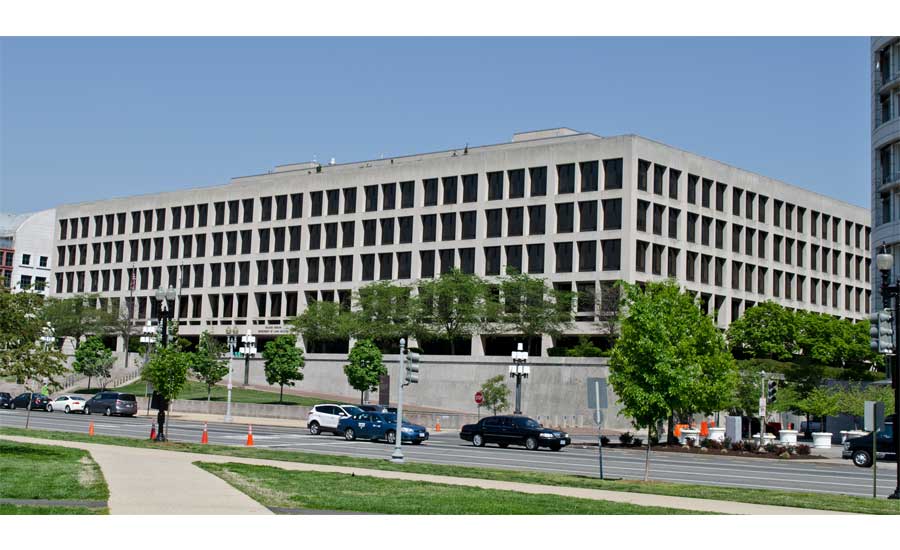The federal Occupational Health and Safety Administration recently published some guidance for best ventilation practices to combat the spread of coronavirus. OSHA has rules governing ventilation for certain activities, such as sandblasting or working in a paint room. This marks the first time the agency touched on ventilation for all workplaces.
These are only recommendations, not rules. Businesses are not required to upgrade their ventilation systems. They could create the basis for some conversations HVAC contractors have with their commercial clients going forward. The guidance specifically states that employers should work with an HVAC professional to consider steps to optimize building ventilation.
“An HVAC professional can ensure that the ventilation system is operating as intended,” the recommendation states.
OSHA recommends employers install MERV-13 filters. It also recommends using caution when removing these filters by following the recommendations from ASHRAE. This includes wearing N95 respirators, eye protection (safety glasses, goggles, or face shields), and disposable gloves. OSHA also recommends that employers consider using portable high-efficiency particulate air (HEPA) fan/filtration systems to increase clean air, especially in higher-risk areas.
Recommendations to increase outdoor air intake are somewhat mixed. OSHA recommends that employers open windows or other sources of fresh air where possible. At the same time it warns that employers should be sure exhaust air is not pulled back into the building from those open windows or the HVAC air intakes.
Lack of Leadership
All these are recommendations right now. Will they become requirements? In order for that to happen, OSHA would first need an actual director. OSHA is overseen by the assistant secretary of labor for OSHA. The position was never filled during the Trump administration as the president’s candidates failed to get through the nomination process. Deputy Labor Secretary Loren Sweatt has been overseeing the agency since 2017. OSHA falls under Sweatt’s office, but she wasn’t supposed to run the day-to-day operations.
Lacking leadership within the agency, Congress has proposed a number of bills concerning ventilation practices, said Pete Chaney, the director of safety and health at Mechanical Contractors Association of America (MCAA). In addition, states have created their own standards to prevent virus spread that include ventilation requirements.
“I think OSHA felt compelled to do something,” Chaney said.
The state requirements are fairly vague. For example, Cal/OSHA (in California) requires that employers “maximize the quantity of outside air provided to the extent feasible.” They are also required to determine whether it is possible to increase filtration efficiency to the highest level compatible with the existing ventilation system. This means putting in MERV-13 filters when possible and considering the use of HEPA filters.
Could the federal OSHA create such standards for the entire country? That’s unlikely any time soon, even if a new administrator gets Senate approval in the next year, said Raymond Perez, an attorney with Jackson Lewis. Perez said it can take OSHA more than 10 years to finalize a standard.
“And that’s at the short end,” he said.
New Territory for Some
That’s why the agency prefers to work with existing rules and offer guidance. Still, the incoming administration did run on a campaign to better protect Americans from a pandemic. Perez said OSHA has traditionally taken the position it won’t hold employers responsible for spreading disease, such as the flu. That’s because it’s hard to determine exactly where people contracted it. The pandemic might change that thinking, although regulators will still need to take costs into consideration.
“How much responsibility are we really going to put on the employer when transmissions is unknown?” Perez said. “How much money and resources and time can they really commit to something where either the science isn’t clear and whether any steps you take would really cut down on the transmission or increase the safety of employees?”
There may be some industry-specific rules for facilities that have demonstrated a higher risk, Perez said, such as meat-packing plants. He said a national standard for ventilation could be preferable to a patchwork of state rules, such as are in place now.
In the meantime, Chaney said contractors are already fielding questions from their clients about these ventilation recommendations. He said that if a client insists on following these recommendations even when not required to do so, contractors will oblige them. It’s a conversation contractors have been prepared for even when no one was asking.
“The industry is all over it, but when you go outside the industry, people don’t pay much attention to ventilation, other than healthcare facilities,” Chaney said.








